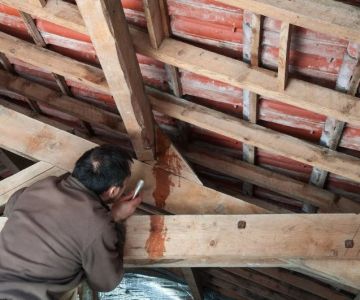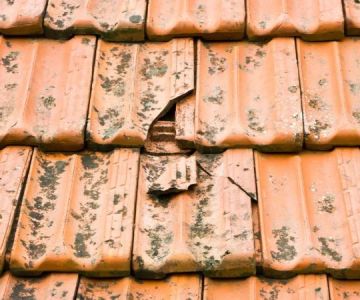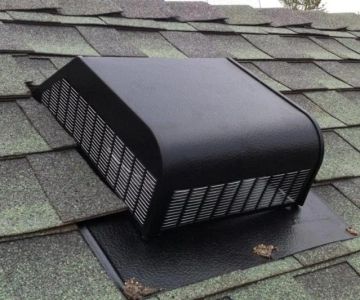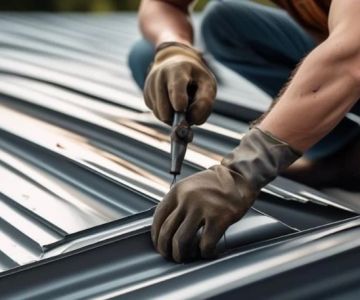
- - Introduction to TPO Roofing
- - What is TPO Roofing?
- - Benefits of TPO Roofing for Commercial Use
- - TPO Roofing Benefits for Residential Homes
- - Costs of TPO Roofing: Commercial vs Residential
- - How TPO Compares to Other Roofing Options
- - Conclusion: Should You Choose TPO Roofing?
1. Introduction to TPO Roofing
When it comes to roofing options, TPO (Thermoplastic Olefin) roofing has become a popular choice for both commercial and residential buildings. Known for its durability, energy efficiency, and cost-effectiveness, TPO roofing has garnered attention from homeowners and business owners alike.
In this article, we will explore what TPO roofing is, the benefits it offers, its costs, and how it compares to other roofing materials. Whether you are considering TPO roofing for a new installation or a replacement, understanding the pros and cons is crucial in making an informed decision.

Michael J Bollinger Roofing Co
HarrisburgDauphin CountyPennsylvania
2101 N Front St, Harrisburg, PA 17110, USA
2. What is TPO Roofing?
TPO roofing is a single-ply membrane roofing system made from a blend of polypropylene and ethylene-propylene rubber. This material is lightweight, flexible, and resistant to UV rays, making it an ideal choice for various types of buildings. TPO roofing is typically white, although it can also come in other colors, which helps with its energy-efficient properties.
TPO roofing is known for its ease of installation, low maintenance requirements, and resistance to punctures, tears, and chemicals. It’s commonly used in both commercial and residential buildings due to these advantages. Additionally, TPO roofs are often installed with heat-welded seams, offering superior strength and durability compared to other single-ply roofing materials.

4 Weather Restoration LLC
WaterburyNaugatuck Valley Planning RegionConnecticut
69 Geddes Terrace, Waterbury, CT 06708, USA
3. Benefits of TPO Roofing for Commercial Use
For commercial buildings, TPO roofing offers numerous benefits. Below are some key advantages of choosing TPO roofing for your business:
3.1 Energy Efficiency
TPO roofing is highly energy-efficient due to its reflective properties. The white surface of TPO reflects sunlight and UV rays, reducing the heat absorbed by the building. This can significantly lower cooling costs in warmer climates and make your business more eco-friendly.
3.2 Durability and Longevity
TPO roofing is resistant to wear and tear, including resistance to punctures, tears, and chemicals. This makes it an excellent choice for businesses that need a roof that can withstand harsh environmental conditions, including heavy foot traffic, foot traffic, and extreme weather.
3.3 Low Maintenance
One of the key benefits of TPO roofing is its low maintenance requirements. TPO roofs are resistant to algae and mold growth, which can cause deterioration in other roofing systems. This means that businesses with TPO roofing typically face fewer repairs and maintenance costs over time.
3.4 Cost-Effective
Compared to other commercial roofing systems like EPDM or PVC, TPO roofing is relatively affordable. Its cost-effectiveness, combined with its long lifespan, makes TPO roofing a smart investment for businesses looking to save on roofing expenses while still getting excellent protection.
4. TPO Roofing Benefits for Residential Homes
While TPO roofing is often associated with commercial buildings, it can also offer significant benefits for residential properties. Homeowners can enjoy the following advantages of TPO roofing:
4.1 Energy Savings
As with commercial buildings, the reflective nature of TPO roofing can help reduce energy costs for residential homes. In hot climates, the reflective surface can help keep the home cooler, leading to lower air conditioning bills. This can be especially beneficial for homeowners who live in areas with hot summers and high energy costs.
4.2 Eco-Friendly
Homeowners who prioritize sustainability will appreciate TPO roofing’s eco-friendly benefits. TPO is a recyclable material, which reduces environmental impact. Its energy-saving properties also contribute to a reduced carbon footprint by lowering the demand for air conditioning.
4.3 Aesthetic Appeal
TPO roofing comes in a variety of colors, though white is the most common. The clean, bright look of a TPO roof can enhance the aesthetic of your home, particularly when paired with other modern building materials. TPO’s sleek design can complement a variety of architectural styles, giving homeowners more design flexibility.
5. Costs of TPO Roofing: Commercial vs Residential
One of the biggest factors in choosing a roofing material is cost. TPO roofing is generally more affordable than other types of roofing systems like metal, slate, or clay tiles. However, the cost of TPO roofing can vary depending on whether it's installed on a commercial or residential building.
5.1 Commercial TPO Roofing Costs
The cost of TPO roofing for commercial buildings can range from $3.50 to $6.00 per square foot, depending on factors such as the size of the building and the complexity of the installation. Larger commercial roofs will generally cost more to install, though the price per square foot can decrease with larger projects.
5.2 Residential TPO Roofing Costs
For residential homes, TPO roofing typically costs between $5.00 and $8.00 per square foot. While residential TPO roofing may cost more than traditional asphalt shingles, its durability and energy efficiency make it a worthwhile investment. The overall cost will depend on the size of your home and the complexity of the installation.
6. How TPO Compares to Other Roofing Options
When deciding on a roofing system, it's important to compare TPO with other popular roofing options. Here’s how TPO stacks up against some of the most commonly used roofing materials:
6.1 TPO vs EPDM Roofing
EPDM (Ethylene Propylene Diene Monomer) is another popular single-ply roofing option for both commercial and residential buildings. While EPDM is durable and cost-effective, it is not as energy-efficient as TPO. EPDM roofs typically have a darker color, which absorbs more heat, leading to higher cooling costs. TPO is a better choice for energy savings due to its reflective surface.
6.2 TPO vs PVC Roofing
PVC roofing is another durable option that is resistant to chemicals and extreme weather conditions. However, PVC roofing is often more expensive than TPO and may not offer the same level of energy efficiency. TPO is a more affordable and eco-friendly alternative to PVC roofing, making it a better choice for cost-conscious homeowners and businesses.
7. Conclusion: Should You Choose TPO Roofing?
TPO roofing is an excellent choice for both commercial and residential buildings due to its affordability, energy efficiency, and durability. It’s particularly ideal for homeowners and business owners looking for a cost-effective roofing solution that can stand up to the elements and reduce energy costs. While it may not have the same lifespan as some premium roofing materials, TPO is still a long-lasting and reliable option for many buildings.
For more information on TPO roofing and other roofing options, visit BeachCo Roofing Hub for expert advice and quality roofing services.







 Home Run Roofing & Siding NY0.0 (0 reviews)
Home Run Roofing & Siding NY0.0 (0 reviews) National Home Improvements5.0 (13 reviews)
National Home Improvements5.0 (13 reviews) Kyles Quality Roofing0.0 (0 reviews)
Kyles Quality Roofing0.0 (0 reviews) Marriott & Sons Roofing0.0 (0 reviews)
Marriott & Sons Roofing0.0 (0 reviews) City Roofing & Siding Inc.5.0 (19 reviews)
City Roofing & Siding Inc.5.0 (19 reviews) Virginia Pro Roofing4.0 (9 reviews)
Virginia Pro Roofing4.0 (9 reviews) How to Choose the Best Roofing Material for a Building with a Green Roof System
How to Choose the Best Roofing Material for a Building with a Green Roof System The Cost of a New Roof with a Class 4 Impact-Resistant Rating
The Cost of a New Roof with a Class 4 Impact-Resistant Rating How to Properly Install Roof Snow Fences to Prevent Drifting
How to Properly Install Roof Snow Fences to Prevent Drifting How to Choose a Roofing Material for a Building with a Unique Architectural Feature
How to Choose a Roofing Material for a Building with a Unique Architectural Feature How to Install Roof Flashing on a Complex Roof with Multiple Pitches
How to Install Roof Flashing on a Complex Roof with Multiple Pitches How to Install Roof Ice and Water Shield on Complex Roof Details
How to Install Roof Ice and Water Shield on Complex Roof Details